Loofah sponge made by the research team of Dr. Tran Thi Viet Ha (32 years old) has the effect of separating oil and microplastics from water, helping to solve environmental pollution problems.
In 2021, Dr. Tran Thi Viet Ha, lecturer at the Faculty of Advanced Technology and Engineering, Vietnam Japan University (Vietnam National University, Hanoi) and team members came up with the idea of making super hydrophobic materials from fibers. loofah to remove oil and microplastic particles in water. After more than a year of research, the team created a super hydrophobic foam product consisting of two main components, a base layer and a coating.
The base layer is used by the group to take advantage of natural old loofahs due to the fact that they contain many hydrophilic hydroxyl groups, making them naturally absorbent. Through the cleaning step, the loofah surface is dipped and sprayed with a layer of wax to create roughness for the fibers, and at the same time change the properties from hydrophilic to hydrophobic.
Coatings are made from various types: beeswax, palm wax, bean wax… are completely natural and environmentally friendly.
The wax-coated sponge is waterproof but completely oil-absorbing. It also easily attracts microplastics about 5 μm in size, due to the capillary phenomenon due to the 3D structures and the electrostatic force of interaction between the surface of the material and the plastic particles.
.jpg)
Loofah after being waxed is completely waterproof. Photo: Research team
The test results show that the hydrophobic properties of loofah are good with high water contact angles above 150 degrees. This is the basis for separating the oil and capturing the microplastic particles in the water mixture.
According to the team, a surface is evaluated as hydrophobic or hydrophilic based on the contact angle between the droplet and the solid surface. When the contact angle is greater than 150 degrees, the surface becomes super hydrophobic. Thus, loofah has successfully demonstrated superhydrophobicity.
Loofah sponges can absorb oil at a rate of about 72-88 g/g, with a separation efficiency of over 99% for oil/water mixtures. In addition, the material demonstrates a high ability to absorb microplastics, with 381 mg of polystyrene microplastics obtained in 569 g of water, equivalent to 99% efficiency.
Dr. Ha and colleagues have conducted similar research on industrial foams such as polyurethane foam, melamine foam and coating materials made from chemicals with a complex method, suitable only for laboratory scale. Meanwhile, the loofah material and the natural wax coating method are evaluated which can be implemented on a wider scale in practice. “The process is simple with easy-to-find equipment and does not require high technical skills, especially the quick fabrication time is within 1 hour,” said the female doctor.
.jpg)
Loofah can separate oil from water. Photo: Research team
A report in July 7 by the World Bank (World Bank), estimated that there is about 2022 million tons of plastic waste on land annually in Vietnam. Besides microplastics, oil can enter water sources through direct or indirect discharge and release into the environment through different routes, leading to many potential problems in human health and animal.
Many methods have been applied to solve this problem, including combustion, chemical treatment, biological treatment, etc., but can cause secondary pollution. For example, the incineration method can help remove oil from water but also pollutes the air by generating large amounts of CO2 and SO2 after the process.
Dr. Ha said that the group’s fibrous sponge can be used to treat environmental pollution and overcome the above problems. The study was published in the journal Environmental Technology & Innovation in May 6.
Assoc. Nguyen Minh Phuong, Faculty of Chemistry, University of Natural Sciences (Vietnam National University, Hanoi), assessed that oil and microplastics are two environmental pollutants that are of great concern not only in Vietnam but also in Vietnam. all around the world. Oil spill contamination in surface water environment is a painful problem, materials to remove it need to be very light and float on water. Meanwhile, microplastics are more toxic than large-sized plastics and can be observed with the naked eye. The two objects targeted by Dr. Ha’s research team are both topical and practical.
According to Assoc. Phuong, the research related to oil and microplastic treatment in water environment is still quite modest both domestically and internationally. No research group has yet developed a material that can simultaneously treat both oil and microplastics in an aquatic environment.
She said that using loofah to deal with environmental pollution is a new and unique idea because it is a natural, environmentally friendly and biodegradable material. . Loofah has been used in some research on materials to treat inorganic pollutants such as heavy metals in water because it has outstanding features of large surface area, large pore size and very light, easy to use. floating on the water surface.
The group of superhydrophobic materials is also of interest to scientists around the world because it has the ability to selectively absorb oil. Usually, chemical methods are used to transform porous materials into hydrophobic surfaces.
PSG Phuong said that using wax of natural origin as the research team to modify the surface of the material is an interesting and highly applicable idea.
Source: Vnexpress


VJU lecturer makes loofah sponges that absorb oil and microplastics – Vietnam Japan University
[url=http://www.go191iz86e9i1u962vmp8k999rkn82bzs.org/]ubiyssyhrj[/url]
abiyssyhrj
biyssyhrj http://www.go191iz86e9i1u962vmp8k999rkn82bzs.org/